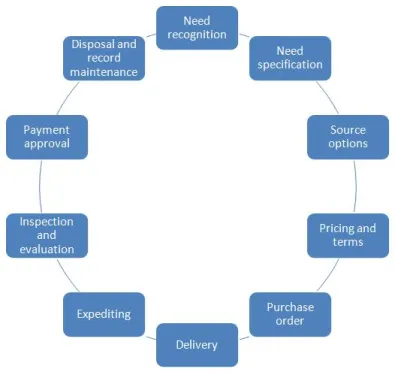How to Improve Efficiency in Your Business Approval Process
- donnariekepro
- Jul 11, 2024
- 3 min read
In today's fast-paced business environment, efficiency is paramount. Streamlining your approval process is one of the key ways to enhance operational efficiency. By doing so, businesses can save time, reduce costs, and improve overall productivity. Here’s a comprehensive guide to improving the efficiency of your business approval process.
1. Analyze Your Current Approval Process
The first step towards improving your approval process is to analyze the current system. Identify bottlenecks, repetitive tasks, and areas where delays commonly occur. By understanding where inefficiencies lie, you can start to develop strategies to address them.
Steps to Analyze:
Map the Process: Create a visual map of your approval workflow to see each step clearly.
Gather Feedback: Get input from employees who are involved in the process to understand their pain points.
Measure Time: Track the time taken at each step to identify where delays happen.
2. Implement Automation
One of the most effective ways to improve efficiency is by automating the approval process. Automation can significantly reduce the time spent on repetitive tasks and minimize human error.
Benefits of Automation:
Speed: Automated workflows can process approvals faster than manual systems.
Consistency: Ensures that each approval follows the same procedure, reducing variability.
Tracking: Provides real-time tracking of approval status, making it easier to manage and audit.
Tools for Automation:
Workflow Automation Software: Tools like Zapier, Asana, and Trello can automate various aspects of the approval process.
Custom Solutions: Developing custom software tailored to your specific needs can offer the most effective solution.
3. Set Clear Guidelines and Criteria
Having clear guidelines and criteria for approvals can streamline decision-making and reduce the time spent on each approval. Define what constitutes a complete application, what documents are necessary, and who needs to approve each step.
Steps to Set Guidelines:
Create Templates: Use standard templates for submissions to ensure all necessary information is included.
Define Roles: Clearly define who is responsible for each part of the approval process.
Set Criteria: Establish objective criteria for approvals to reduce ambiguity and speed up decision-making.
4. Improve Communication
Efficient communication is vital for a smooth approval process. Ensure that all stakeholders are kept in the loop and that any issues are addressed promptly.
Strategies for Improved Communication:
Centralized Communication Platform: Use a centralized platform like Slack or Microsoft Teams for all communications related to approvals.
Regular Updates: Provide regular updates on the status of approvals to keep everyone informed.
Clear Channels: Establish clear communication channels for addressing any queries or issues that arise.
5. Monitor and Adjust
Continuous monitoring and adjustment of the approval process can help maintain and improve efficiency over time. Regularly review the process to identify new bottlenecks and make necessary adjustments.
Steps for Continuous Improvement:
Regular Audits: Conduct regular audits of the approval process to identify areas for improvement.
Feedback Loop: Establish a feedback loop where employees can suggest improvements to the process.
Metrics: Use metrics to track the performance of the approval process and set benchmarks for improvement.
6. Train Your Team
Ensuring that your team is well-trained in the approval process and any tools used can significantly enhance efficiency. Regular training sessions can help keep everyone up to date on best practices and new tools.
Training Tips:
Regular Workshops: Conduct regular workshops to train employees on the approval process and any automation tools used.
Documentation: Provide comprehensive documentation and guides for the approval process.
Ongoing Support: Offer ongoing support to address any issues or questions that arise.
Conclusion
Improving the efficiency of your business approval process can lead to significant time and cost savings, as well as enhanced productivity. By analyzing your current process, implementing automation, setting clear guidelines, improving communication, monitoring and adjusting regularly, and training your team, you can streamline your approval workflow and achieve better business outcomes. Embrace these strategies to ensure your approval process is efficient, effective, and well-aligned with your business goals. SITES WE SUPPORT
SOCIAL LINKS




Comments